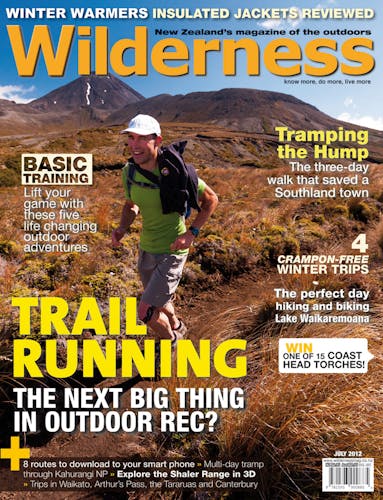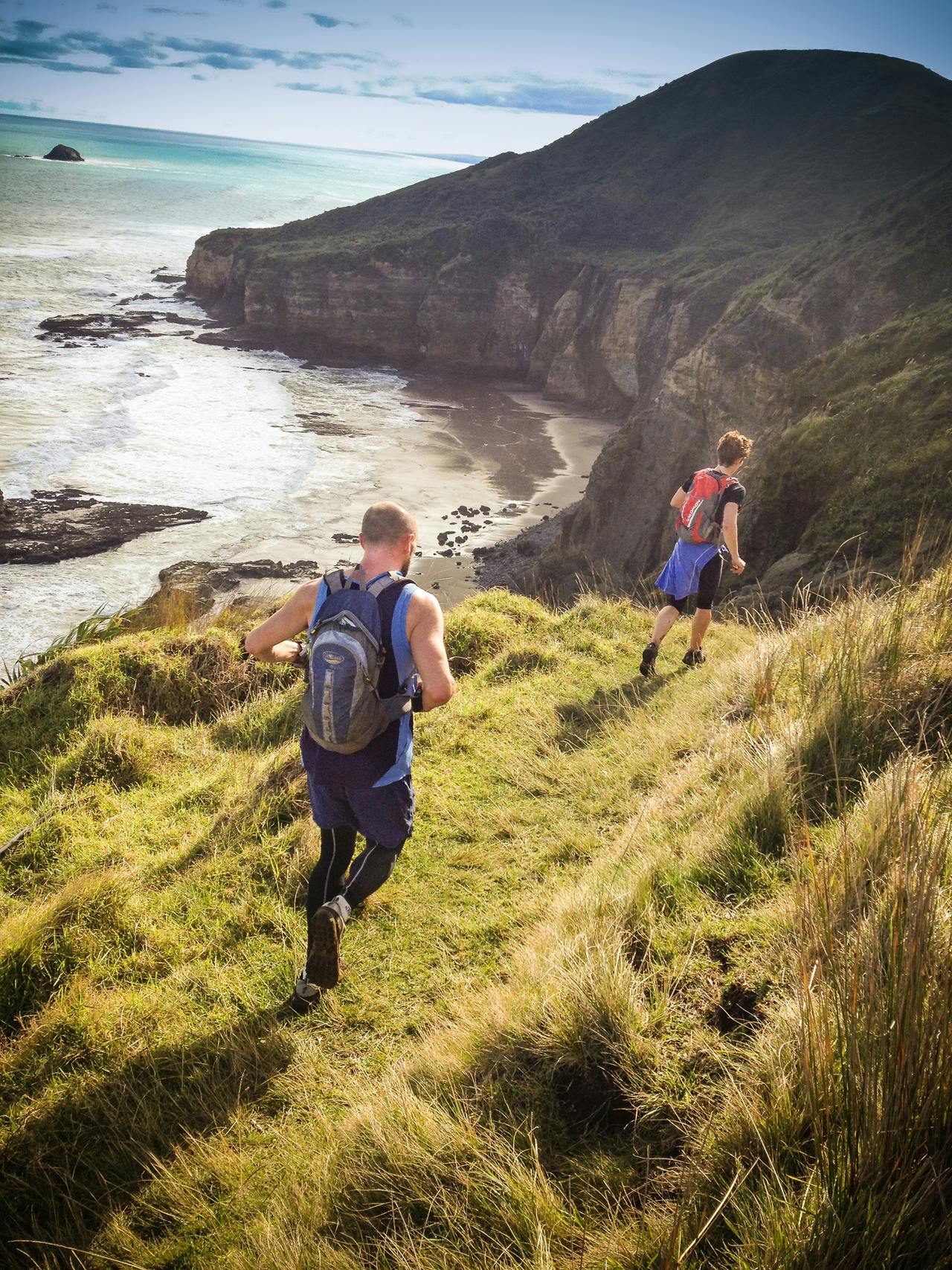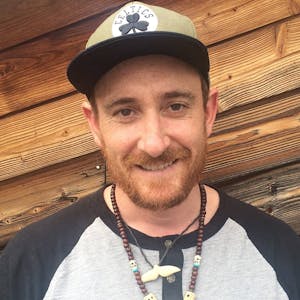There’s a strange phenomenon occurring on tramping tracks throughout the country. Super fit men and women wearing bright shoes, skin-tight leggings and carrying skimpy packs are running New Zealand’s toughest multi-day tracks in a single day. Josh Gale dons his trainers to find out why trail running is the next big thing in outdoor recreation
If you’re reading this at night, stop for a moment and spare a thought for Vicki Woolley’s two children.
While tucked up in bed, their mum, a chronic thrill seeker, is probably running alone in the bush, through the deepest mud and gnarliest trails she can find.
The 43-year-old accountant and single mum acknowledges her behaviour is out of the ordinary, but she can’t help it.
“People think I’m particularly unbalanced because I do almost all my running on my own in the bush and a lot of it at night,” Woolley says. “I know it’s not normal behaviour because I’m the only one out there.
“I’m a single parent with two children – it’s not a sensible thing to do.”
There is no scenery or stunning views to be had at night, so the question has to be: why?
“I could go out and run on the road, but running in the bush just ups the risk factor and that’s an enormous part of the attraction,” she explains. “It’s not just a case of whether I can get from A to B, it’s whether I can manage the risks associated with it.”
Risks like falling over and breaking her ankle in an area without cell phone coverage and where no-one can hear her scream.
“That kind of thing is just so enticing,” she says.
Before certifying Woolley as positively insane, read on because there’s a chance she’s more sound than you and me.
Woolley is but one of a growing number of people becoming almost mad for trail running. At the moment, she is organising the third Midwinter Midnight Madness Run. Starting at midnight, it involves running Auckland’s 70km Hillary Trail in one go.
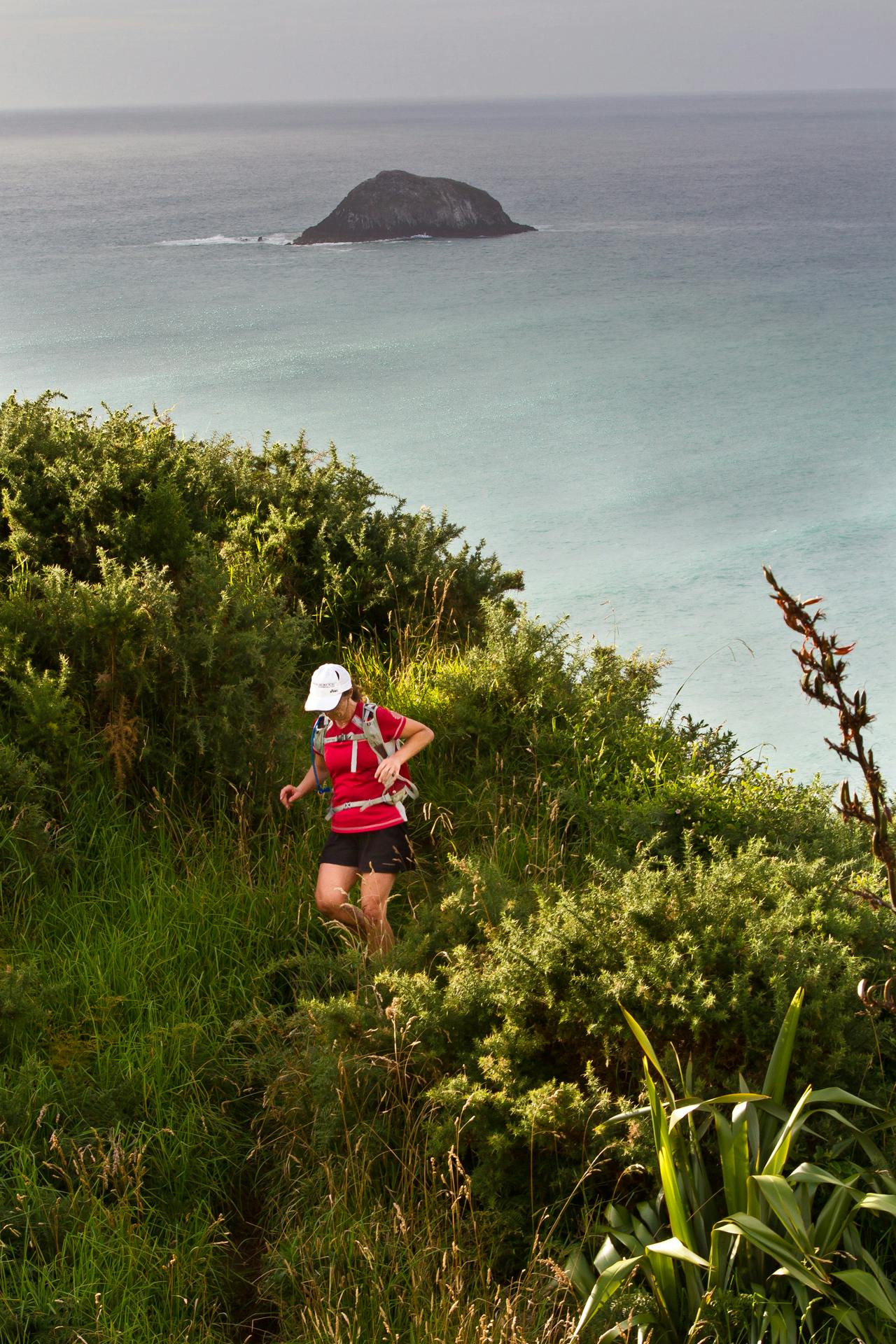
Photo: Shaun Collins
“We frequently discuss within our hardcore circle of predominantly off-road ultra runners that you have to be a little bit unbalanced to do what we do,” Woolley says. “Obviously, I must have a high tolerance for risk, almost a need to take risks.
“I have an innate desire to find my physical limitations. It’s quite scary because the ultimate answer to that is fairly final. But at least I’m cheerful about it.”
If you think that’s too much; meet exhibit B: Craig Thomson and his twin 13-year-old daughters Ashley and Claire.
Along with many other Auckland trail runners, the Thomsons have a beef with me for complaining about the state of Hamilton Track section of the Hillary trail – which they lovingly refer to as the Mud Monster – and suggesting it needs an upgrade. They’ve even been writing letters to Auckland Council asking that the 2.8km track of mud slosh be left as is. More mud the better is their motto.
The two super-fit Thomson teens hold the record for the youngest to run the length of the Hillary Trail in a day.
Shaun Collins, the only person (mad enough) to run the Hillary Trail twice in less than 24 hours, is keeping a Hillary Trail Honours Board.
Getting on it, and staying on it, is a compelling motivation for many people, including Collins who is planning yet another, more crazy undertaking that he wishes to remain confidential until the mission is completed.
Along with their dad, Claire and Ashley Thomson started their 70km run at the Arataki Visitor Centre at midnight and traversed their beloved Hamilton Track through the darkness with head torches.
“It was tough going; it’s long and it’s slow,” Craig Thomson says. “It took us 90 minutes, but some guys can go through there in half that time.”
Like many new trail runners, the Thomson family come from a road running and a tramping background but got bored of the pavement and long days hiking.
“Trail running came from joining the two together I guess,” Thomson says. “It got to the point that hiking was a bit slow and moving quicker and lighter seemed like a good idea and it evolved that way.”
The Thomsons are part of a rapidly increasing number of people around New Zealand, and the world, who are turning to muddy, dirty, rocky, rooty and often underutilised trails for a quick and fast form of outdoor recreation.
The activity now commonly referred to as trail running is not new. It has gone by other names over the past few decades: bush running, off-road running, ridge running and mountain running to name a few.
The Wellington Ridge Runners and The Huia Bush Runners, for example, have been around for donkey’s years.
So what’s changed? Well, aside from the name, in the last five years trail running has grown exponentially and shows no sign of abating.
According to veteran runner Malcolm Law, trail running is a North American term that has come to include all forms of off-road running.
“The term trail running has only just come into the local vernacular,” he says. “It might be a couple of years old, certainly less than five. We always just used to call it off-road running. We didn’t really say trail running.”
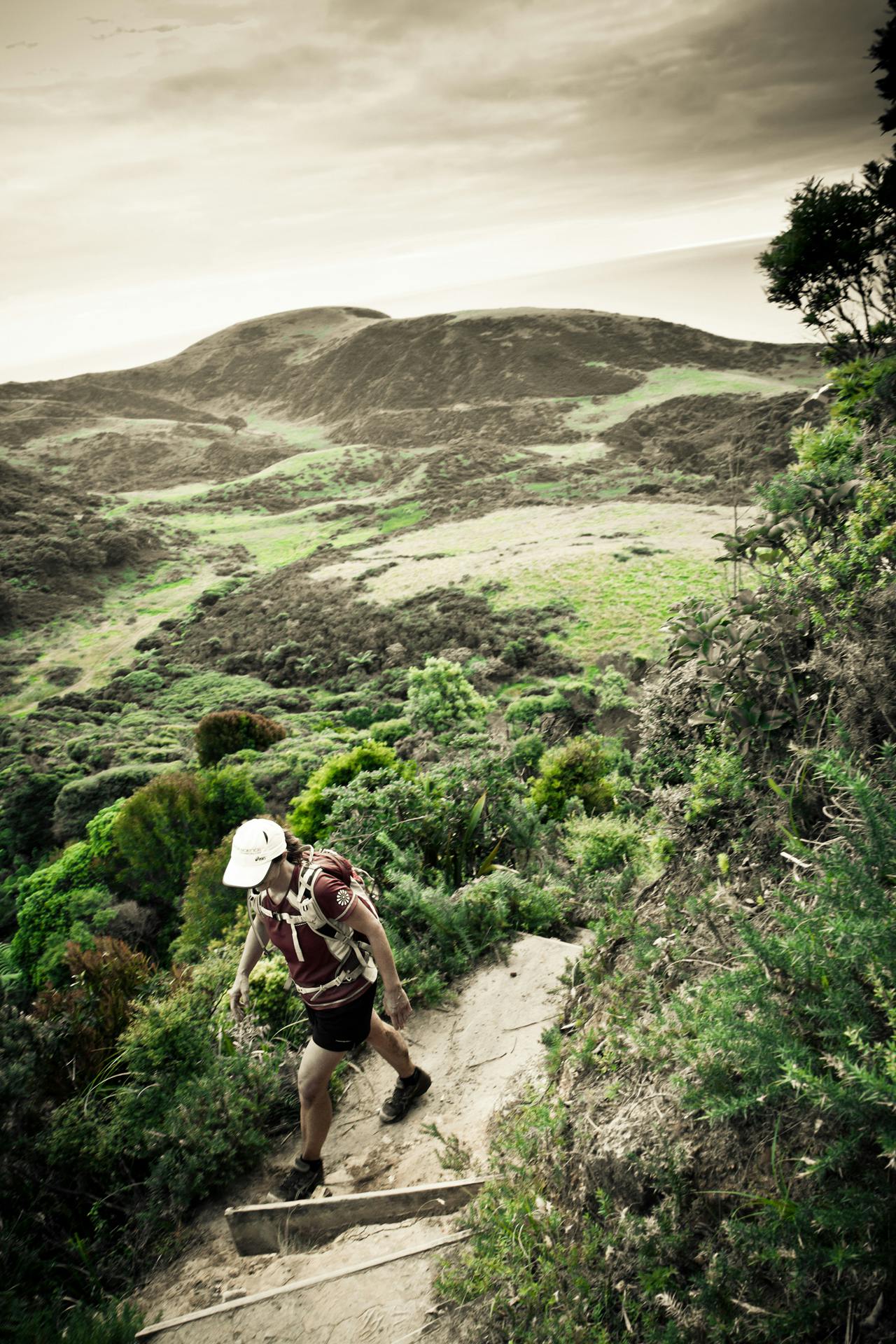
Photo: Shaun Collins
Law made history in 2009 by becoming the first person to run New Zealand’s seven mainland Great Walks in seven days. He completed a similar, though tougher, challenge in 2010.
I caught up with him just before he flew to England to run the 1014km Southwest Coast Path, the longest foot path in the UK.
The current record for traversing the path is 23 days. Law and co-runner Englishman Tom Bland aim to do it in 14 which averages out to running one-and-three-quarter marathons every day.
Law is raising funds for mental health organisations s and hopes to raise awareness and understanding about mental health issues.
“The whole journey is very analogous to the horrible battle people with mental health issues go through; going up, coming down, going up, coming down,” Law says. “I’m not immune from those ups and downs; I have my moments like many people.
“Running in wild places and setting goals really helps to keep me on the straight and narrow. If we all did that on a regular basis, we’d have a lot less issues.”
So perhaps Vicki Woolley isn’t as crazy as she sounds. Given her constant running in wild places and her audacious goal setting, her grip on reality might be even firmer than ours.
Law, Woolley, Thomson and other trail runners I spoke with are blown away by how popular trail running has become.
When the first Xterra trail running event was held at Piha nine years ago it attracted 25 entrants. Three years ago the number of runners competing in another Xterra event had increased to between 300 and 400. Now each of the six Xterra events attract between 900 and 1300 runners.
In 2003, Total Sport, which runs the Xterra Series among other trail running events, attracted a total of 567 starters to all of its events. This year the number of starters is expected to reach 18,000.
Statistics from Total Sport reveal 89 per cent of event participants are runners or walkers, the rest mountain bikers. Seventy-six per cent class themselves as ‘keen and enthusiastic’, 15 per cent ‘high level performers’ and only 1.2 per cent as ‘elite athletes’. The age of participants is anywhere between 28 and 55 and there’s an equal split between men and women.
Total Sport says event participants consist, on the whole, of family people with above average disposable income who care about their health and fitness, but who are short on leisure time.
Some of the ultra races, like the 60km Kepler Challenge and the Tarawera Ultra Marathon are so popular they sell out in a few hours, sometimes in less than 30 minutes.
Anecdotal evidence suggests on some tracks it is common to see more trail runners than trampers.
The Hillary Trail is a case in point. While a few groups of trampers are occasionally seen on it during summer, it’s the community of trail runners, wearing colourful shoes and sporting slick compression tights, which make the most use of it.
“I think we’re quite a gratuitous generation and we want our fix now, now, now,” says Woolley. “It used to be okay to go out for big long walks to see some nice views, but I think as people are used to being fitter and to living at a faster pace of life a tramp sometimes just isn’t enough so you speed tramp and that’s really how I describe trail running [to people unfamiliar with the sport] – it’s speed tramping.”
Before becoming a trail runner, Law was a hardcore peak bagger and when he returns from England he aims to make trail running and peak bagging the basis of his next goal-setting, sanity-preserving wilderness adventures.
Law reckons while trail running is poaching a few trampers like himself and Craig Thomson, the bulk of its converts are coming from other sports including road running, multisport, triathlons and just your common gym rats.
Law believes the macro-societal reason for this comes down to three things: time, simplicity and adventure.
“In this really hectic age we live in, I think we’re constantly looking for simpler solutions,” he says. “Doing multisport racing isn’t simple; you need a support crew, you need lots of gear, you’ve got to wash the gear after you use it and it’s really hard on time because you have to train for three disciplines.
“With trail running you can just slip on a pair of shoes, go out your back door, run hard for an hour and you get a really good work out. So it’s a really time-efficient way of getting fit and it’s adventurous. I love the simplicity of trail running.”
He says it also has benefits over traditional road running: “A lot of people also recognise getting on the trail is a lot more rewarding and less damaging to the body than running on the road.”
Law credits the influence of Christopher McDougall’s book Born to Run and ultra marathon man Dean Karnazes’ high profile adventures with popularising trail running.
Born to Run, Law says, stresses how human beings have evolved to run long distances and Karnazes, who ran 50 marathons in 50 consecutive days, provided a powerful and glamorous demonstration of the book’s thesis.
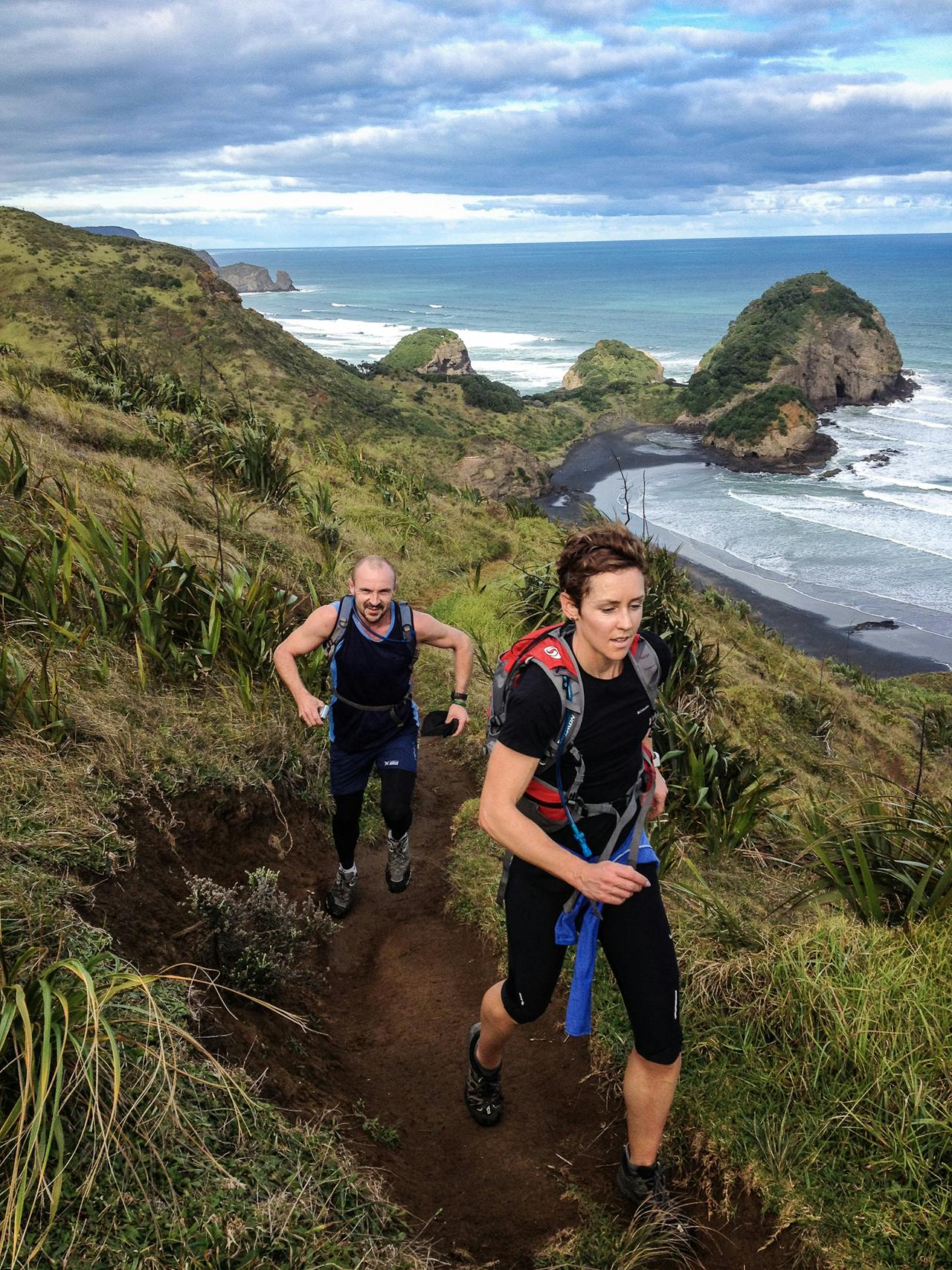
Photo: Josh Gale
“There was a lot in the book that left people with the sense that running is the most natural thing in the world and Karnazes galvanised people to give it a go,” Law says.
Lactic Turkey events director Shaun Collins organises trail running events around the country and says people who enter trail running races want a new adventure every time. Most want to find new areas to run in and events provide a safe and structured way of doing that.
With such a focus on race events it might seem logical, however, that trail running is more competitive and less social than tramping, but according to Collins and other trail runners this is not so. They say a small minority of race entrants want to beat other people but the bulk want to challenge themselves and many just aim to finish.
Weekend running groups are organised through social media and rather than enjoying a game of cards at huts like trampers do, trail runners have get-togethers after their runs.
Collins, who ran The Tarawera Ultra in March, says in his experience most of the trail running newbees are road runners or people new to fitness.
“Trail running is an easy sell,” Collins says. “Do you want to go for a run in the bush and see some awesome views and scenery or do you want to run around the waterfront dodging cyclists and cars?”
Another assumption many people make about trail running is the speed people travel means they can’t fully appreciate the wilderness in the same way people walking through it do.
But Collins says trail running only reduces the time between the highlights.
“I won’t be shy to stop to enjoy a view,” he says. “It’s all part of the experience.”
The rapid rise in the popularity of trail running is almost matched here and abroad with the sport’s longer form: ultra trail running.
Ultra races are any distance over marathon length and the big profile races range between 50km and 160km. It’s in this form of trail running that Kiwi athletes are shining on the international stage and helping to further popularise the sport.
Kiwi ultra runners such as Anna Frost, Vajin Armstrong and Grant Guise are winning or coming close to winning races in the US, Europe and Australia.
Armstrong, who won the last two Kepler Challenge races and aims to make it a “threepeat” this year, says about 70,000 people finished ultra races in the US last year, compared to only a few thousand 10 years ago.
“It’s definitely been growing in leaps and bounds.” he says. “There’re more and more races popping up all over the world.”
In April, Armstrong stunned competitors and organisers at the American River 50 mile Endurance Run by becoming the first non-US citizen to win the race. He was a total unknown to their community and won by a comfortable 10 minutes.
The big races growing really fast overseas, Armstrong says, are the 100km and 100-milers.
“One of the most difficult things in trail running now is getting an entry to a lot of these races,” Armstrong says. “Big races like The North Face Ultra-Trail du Mont Blanc sells out within a few seconds.
“With the Kepler Challenge you have to be waiting at your computer at 6:30am to try and get your name in the hat. Five years ago you could enter the day before the race and they’d have plenty of spots available.”
Armstrong, Guise and Mal Law also credit the growing popularity of trail running to the support of big outdoor companies that have poured money into the sport and helped to glamorise it. Ultra runner Lisa Tamati is sponsored by The North Face and Guise, along with Anna Frost, is on team Salomon
“It’s not gear intensive, it’s not a spectator-friendly sport as far as selling TV rights [goes], so I’m surprised how much outdoor companies have got behind it,” says 32-year-old Guise who lives in Castle Hill and works as a building labourer.
When not earning a crust building, Guise trains in the hills of Canterbury in preparation for his second crack at the 125-mile Canadian Death Race in which he placed third in 2011.
“New Zealand has always done well at everything we’ve had a crack at,” Guise says. “We’re definitely punching above our weight and I think we’ll continue to do so.”
So next time you’re hauling a laden pack over a mountain pass and a fleet-footed runner flies by with nothing more than a hydration pack strapped to their back, they may not be as crazy as you first think.





